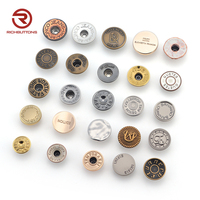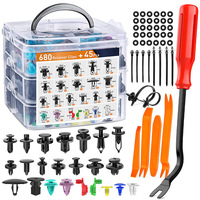

Stainless Steel 304 316 Safety O/D T Handle Ball Handle Type Lock Pipe Inch Lock Pin Tractor Linch Pins




















Choosing the right rivet pin is crucial for ensuring the integrity of fastened joints in a myriad of applications, from the precision required in aerospace to the durability demanded in automotive industries. This article delves into the various materials and design features of rivet pins, offering a comprehensive comparative analysis to guide users in selecting the optimal fastener for their specific needs. Understanding the nuances of rivet pins, from the traditional solid types to the modern 'blind' variants, is essential for any application where a secure and permanent bond is paramount. We will explore the extensive range available on Alibaba.com, discuss material considerations, and examine the unique design features that cater to different environmental conditions and loading requirements.

A rivet pin is a type of permanent mechanical fastener that consists of a smooth cylindrical shaft with a head on one end, and a tail on the opposite end. During installation, the rivet pin is placed into a pre-punched or drilled hole, and the tail is upset, meaning it is deformed to expand and hold the rivet in place. This process creates a new 'head' on the tail end, resulting in a secure fastening that can support tension loads and is particularly effective at supporting shear loads, which are perpendicular to the axis of the shaft.
Rivet pins are versatile and have been historically used in various applications, from traditional wooden boat building to the assembly of modern aircraft. The solid rivet, one of the oldest and most reliable types, is commonly used in structures where safety and reliability are paramount. These rivets are typically made from materials such as aluminum alloys, titanium, and nickel-based alloys, and require specific tools for installation, including hammers, rivet guns, or pneumatic squeezers.
The design of rivet pins allows for their use in applications where only one side of the assembly is accessible, through the use of 'blind' rivets. These rivets come with a mandrel through the center, which is drawn through the rivet with a special tool to create a secure fastening. Blind rivets have been pivotal in industries where access is limited, and they continue to be a staple in construction and manufacturing due to their ease of installation and reliable performance.

Alibaba.com showcases a diverse array of rivet pins catering to various applications. The selection includes Lynch Pins, Linch Pins, and Lock Pins, which are essential for secure fastening in machinery and automotive applications. Customized rivets with round flat heads and different types of metal solid rivets are available, tailored to meet specific customer needs. For specialized uses, such as in helmets, there are custom helmet rivets with semi-hollow stainless steel construction. Manufacturers also offer mushroom head rivet pins that are galvanized for extra durability.
The platform provides rivet pins in various materials, including aluminum, copper, and stainless steel, to suit different environmental conditions and strength requirements. Mushroom head stainless rivets, small leather rivets, and flat solid steel double head round iron screw metal pins are part of the extensive collection. For more universal applications, there are brazier head aluminum hammer drive rivets and round head flat rivets designed for hinge and lock pin mechanisms.
For the automotive sector, there are bumper retainer clips and car plastic rivets fasteners, which are part of the auto push pin rivets set, ensuring vehicles' components are securely fastened. Additionally, the site lists various sizes of cylindrical location pins, custom solid fixing pins, and bearing lock dowel rivets, which are crucial for precise assembly in manufacturing and engineering contexts.
Rivet pins are a fundamental component in various construction and manufacturing applications, and their material composition is crucial for their performance. The body of these pins is typically made from an aluminum alloy, specifically 2117 H15 or its equivalent, which is used across all diameters. This choice of material offers a balance of lightweight properties and strength, making it suitable for a wide range of uses. The pin part of the rivet is crafted from 302 Series Stainless Steel when the diameters are 1/8 and 5/32. Stainless steel is known for its corrosion resistance and strength, ensuring the rivet pin maintains its integrity in diverse environments. The combination of aluminum and stainless steel in rivet pins provides a versatile solution that can cater to both lightweight needs and demanding conditions.
Blind rivets, known for their robust fastening capabilities, come in various core styles, each retaining a different amount of the pin or mandrel post-installation. The filled rivet, with the mandrel flush with the rivet head, offers high shear strength, while the semifilled variant contains a portion of the mandrel, and the hollow rivet features an empty core, beneficial for lightweight requirements and electronic applications where it prevents loose mandrels from disrupting circuits.
The diameter of blind rivets is measured in increments, typically based on the shank size, and the grip range indicates the compatible material thickness for a given rivet length. Manufacturers provide specific recommendations for these measurements. Blind rivets are designed to be loaded primarily in shear rather than tension, and maintaining the manufacturer-specified minimum hole clearance can enhance performance, especially against vibration.
When considering rivet pins for design purposes, factors such as the tolerances of rivet length versus assembly thickness, the type and magnitude of loading, hole clearance, and joint configuration are crucial. The choice of material for the rivet can accommodate varying thicknesses, with some rivets suitable for materials as thin as 0.020 inches. For compressible materials, rivets with larger head diameters are recommended to distribute the load more effectively.

Rivet pins are essential in applications requiring permanent fastening, and the material of the rivet is crucial for its performance. Steel rivets, known for their tensile strength, are hard and durable, suitable for use in demanding environments like aircraft and automotive industries. However, they are heavier and may require more material, which can be a drawback in certain applications.
Aluminium rivets are lightweight and offer corrosion resistance, making them ideal for aircraft construction where aerodynamics are a priority. Their use extends to the automotive industry and HVAC systems, where they contribute to efficiency and longevity.
Stainless steel rivets combine strength with excellent corrosion resistance, making them a versatile choice for various industries, including transportation and construction. Their hygienic properties also make them suitable for applications where cleanliness is paramount.
Copper and copper-nickel rivets offer unique benefits such as high electrical and thermal conductivity, and resistance to corrosion and high temperatures, respectively. These properties make them suitable for electrical appliances and operations in corrosive environments like ship manufacturing.
Plastic rivets provide an alternative to metal, resisting corrosion without the risk of galvanic action. They are commonly used in consumer electronics and appliances, where they join materials without the need for compatibility considerations inherent to metals.
Selecting the appropriate rivet pin for specific applications requires a tailored approach that considers the unique demands of the task at hand. Application-specific fasteners are designed by collaborating closely with application engineers who provide expert advice during the development phase. This collaborative process ensures that the size, material, surface, and function of the fasteners are precisely adapted to meet the specific requirements of the application.
The customization of rivet pins goes beyond the basic features defined by DIN EN ISO standards, which set out the geometrical dimensions and mechanical properties. While these standards offer a starting point, they leave room for manufacturers to specify additional aspects such as material and surface coating. This flexibility allows for the creation of fasteners with narrowed tolerances and connection parameters that can address more stringent requirements.
For fixed components, DIN EN ISO standardised blind rivets are typically used, but when the requirements are more demanding, specifying the materials, surfaces, geometrical dimensions, and functional properties of rivet pins becomes crucial. This level of specification ensures that the fasteners can handle a broader range of tasks and meet diverse customer needs.
Premium rivet pins offer distinct advantages for various applications, ensuring a permanent and secure fastening solution. Unlike screws, which may loosen over time, especially when exposed to vibration, rivets maintain their hold, making them indispensable in industries such as aerospace where reliability is paramount. The absence of threads in the materials being joined by rivets eliminates the need for pre-threaded holes, simplifying the installation process.
The use of high-quality rivets can also support joints with short clamp lengths and are not prone to loosening under vibratory conditions. This characteristic is particularly beneficial in applications like aircraft construction, where the integrity of the joint is critical. Moreover, rivets do not require the application of heat, as in welding, thereby avoiding thermal distortion and maintaining the integrity of the materials being joined.
In terms of material selection, premium rivets are available in a variety of compositions, each offering specific benefits. For instance, aluminum rivets are lightweight and corrosion-resistant, suitable for applications where these properties are desired. On the other hand, steel rivets provide excellent tensile strength and durability, making them ideal for heavy-duty use. Stainless steel rivets combine strength with superior corrosion resistance, making them a versatile choice for both industrial and design applications.
Installing a rivet may seem daunting at first, but with the right approach, it becomes a straightforward task. Begin by selecting the correct tool; a hand riveter is sufficient for occasional use, while a battery-operated rivet tool is better for frequent installations. Preparation is key, so ensure you have a drill and the appropriate drill bit to create a hole in the materials you're joining.
Once the hole is drilled, insert the mandrel of the rivet into the riveting tool until it's flush with the flange. Position the rivet's hat through the hole and apply pressure to keep it in place. Squeezing the tool's handle will pull the mandrel back through the rivet's hat, causing it to expand and secure the materials. This process is completed when the mandrel snaps off, leaving a tight, secure fastening.
It's crucial to select a rivet that matches the thickness of the materials being joined. Incorrect sizing can result in a loose fit or improper expansion during installation. For a successful installation, the rivet must be within the correct grip range for the material's thickness. Observing these tips will help ensure a secure and durable rivet installation.
In conclusion, the selection of the right rivet pin is a nuanced decision that impacts the performance and reliability of fastened joints across various industries. This article has provided a detailed exploration of rivet pins, highlighting the importance of material composition and design features in their application. From the lightweight and corrosion-resistant aluminum rivets ideal for aerospace, to the robust and durable steel rivets suited for heavy-duty environments, each material offers distinct advantages. The design features, such as the core style of blind rivets and the grip range, play a critical role in the fastener's functionality. Moreover, the customization of rivet pins to meet specific application requirements underscores the importance of collaboration with application engineers. Premium rivet pins stand out for their ability to maintain a secure hold without loosening, even under vibratory conditions, and the absence of thermal distortion during installation. Finally, proper installation is key to leveraging the full benefits of rivet pins, with best practices ensuring a secure and lasting fastening. Whether for standard applications or specialized needs, the right rivet pin can significantly enhance the structural integrity and longevity of the assembled products.